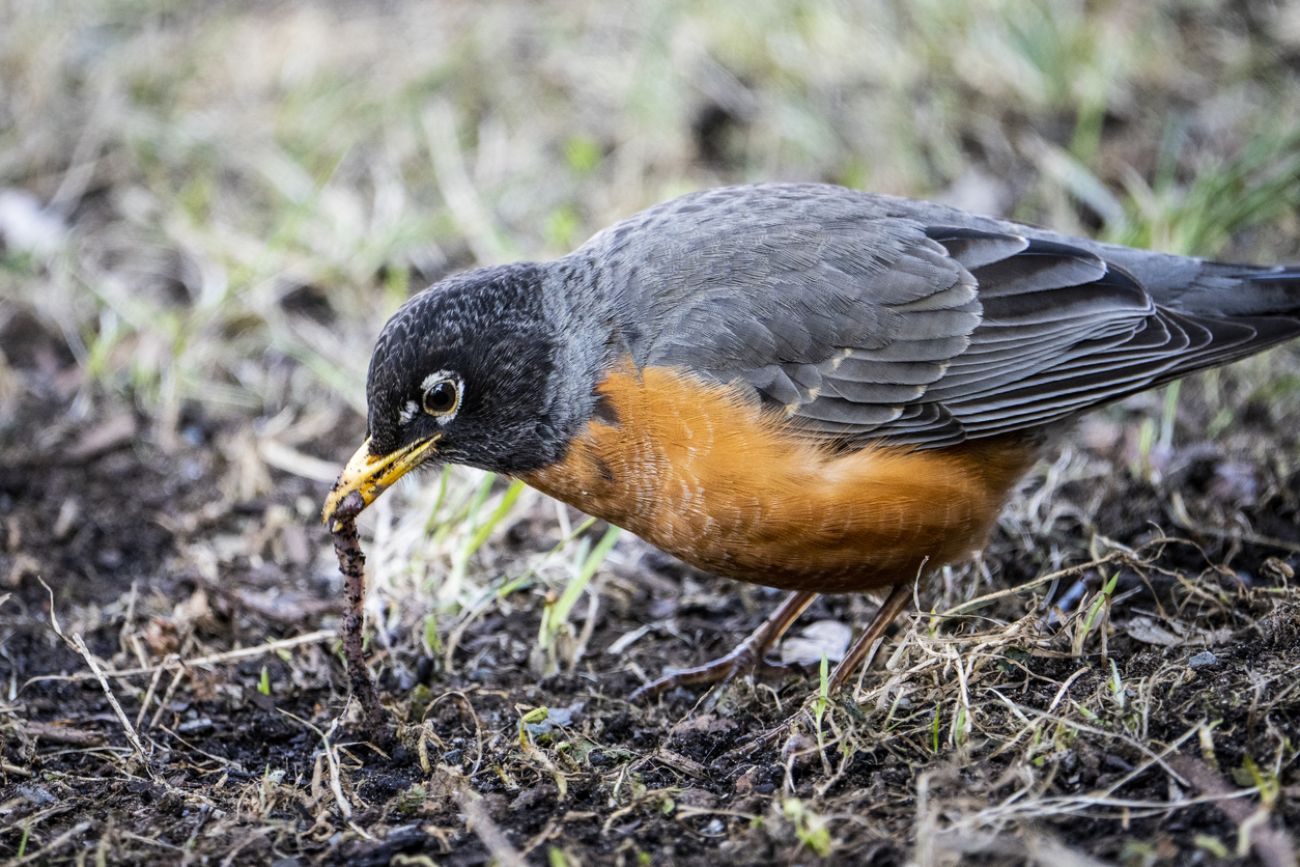Move over, coal-mine canaries: Michigan study says robins can predict soil lead

LANSING – Remember the canary in the coal mine?
If the caged canary died, that was an urgent early warning for miners that the air was too dangerous to breathe and to get above-ground as quickly as possible.
Now there’s evidence from Southeast Michigan that the American robin can provide an early warning about dangerous lead levels in the soil.
A new study in the journal “Urban Ecosystems” found that high blood lead levels in robins can accurately predict where soil is contaminated.
Exposure of children to lead is linked to damage to their nervous system and brain, learning and behavioral problems, and speech and hearing problems, according to the Centers for Disease Control and Prevention.
There is relatively little knowledge about the health impacts of blood lead levels on songbirds such as robins. However, prior research found that lead can affect birds’ brain weight, cognition, nestling growth, balance, depth perception, reproduction and aggressive behavior.
Related:
- Deep in the UP, an abandoned mine could offer hope for green energy fights
- UP mine sees recycling as path to more EV minerals and a greener image
- Mining rush brings hope, dread to Upper Peninsula, amid historic energy shift
The American robin, which is widespread in North America, is known for hunting earthworms in lawns.
“This earthworm specialization results in the ingestion of large amounts of soil” – some of it contaminated with lead, the study said.
The project began when study coauthors Dorothy Zahor of Garden City and Kenneth Glynn of Fowlerville were master’s students at Eastern Michigan University and interested in what urban birds were exposed to because of the crisis in which lead polluted Flint’s water supply. They’re now Ph.D. students at Oregon State University.
Zahor said they were thinking about how and where birds forage.
They initially also looked at several other species before focusing on robins. For example, goldfinches and house sparrows primarily eat seeds above the soil, unlike robins, which had higher blood lead levels, she said.
They tested about 100 robins during the spring and summer breeding seasons in 2018-20.
In Flint, some of the robins were netted at sites on the University of Michigan Flint and Mott Community College campus that had been irrigated with city water and others at non-irrigated locations in the city. For comparison, they tested robins at irrigated and non-irrigated locations in Ypsilanti, a city with no known history of lead pollution, and in a non-irrigated rural site in Lapeer.
Soil samples came from open lawns at the sites.
The birds were banded and released immediately after being measured and having their blood taken, the study said.
Testing found that soil and blood lead levels were similar at both the irrigated and non-irrigated Flint sites, but levels at the irrigated Flint sites were higher than at the Ypsilanti and Lapeer locations.
The study said that while Flint residents were advised against drinking tap water, “during the height of the crisis, there was less focus on guidance concerning lawn irrigation using lead-contaminated water.”
Glynn said one lesson learned from the study is the need to be “more intentional” in considering multiple ways that contaminated water is used, spreading pollutants.
Soil can accumulate lead and other metals when irrigated with polluted water. The study said, “Irrigation with contaminated water can disperse lead more broadly into the environment,” and “interaction with soil lead is the main pathway of lead exposure in children.”
Glynn said, “For good reason, the bulk of the effort during the water crisis was to mitigate danger to the public,” adding that officials didn’t spend as much time thinking about how else contaminated water entered the ecosystem.
The study noted that children playing outdoors can have physical contact and ingest contaminated soil “due to their frequent hand-mouth activity.”
Flint isn’t the only Michigan community where lead-lined pipes have contaminated the drinking water. Others include Detroit, Grand Rapids, Escanaba, Hesperia, Benton Harbor and Jackson,
Dean Scott, a strategic communications advisor at the Department of Environment, Great Lakes and Energy, said, “Generally speaking, the older the community the more likely lead piping in residences or the service lines that connect from water mains to homes exists.”
“Additionally, poorer communities facing social/environmental justice issues can often have aging water infrastructure including lead piping, Scott said.
He said, “Michigan has the strictest Lead and Copper Rule in the nation and we are well ahead of other states in removing and replacing the state’s lead service lines.
Capital News Service originally published this story.
Michigan Environment Watch
Michigan Environment Watch examines how public policy, industry, and other factors interact with the state’s trove of natural resources.
- See full coverage
- Subscribe
- Share tips and questions with Bridge environment reporter Kelly House
Michigan Environment Watch is made possible by generous financial support from:
Our generous Environment Watch underwriters encourage Bridge Michigan readers to also support civic journalism by becoming Bridge members. Please consider joining today.
See what new members are saying about why they donated to Bridge Michigan:
- “In order for this information to be accurate and unbiased it must be underwritten by its readers, not by special interests.” - Larry S.
- “Not many other media sources report on the topics Bridge does.” - Susan B.
- “Your journalism is outstanding and rare these days.” - Mark S.
If you want to ensure the future of nonpartisan, nonprofit Michigan journalism, please become a member today. You, too, will be asked why you donated and maybe we'll feature your quote next time!






